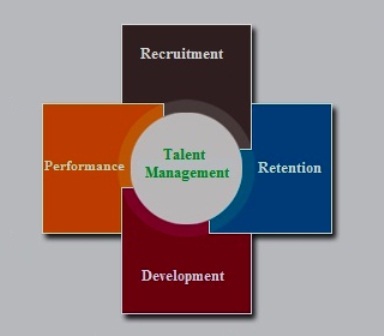
The process of project cost estimation is central to setting up the foundation for making key decisions, taking initiatives, budgeting activities and controlling expenditures. Cost forecasts and projections are used to establish a set of metrics against which project success will be measured, and to communicate work progress to the stakeholders at any given point in time.
The necessity of calculating expenses consists in maintaining confidence and trust that project activities are performed properly and as expected throughout the entire project life-cycle.
Logical and reasonable cost estimates will allow the team to make collaborative effort with a reduced probability of risk occurrence and failure because the estimators use various efficient methodologies to fight uncertainty, prevent performance bottlenecks, determine budget and control spending.
The Underlying Principles of Cost Estimating
The estimation process complies with a set of principles which act as a foundation for identifying and calculating right project expenses. Here are the key principles:
Integrity
Any cost estimate should be produced with a high standard of ethical integrity and by following an open and transparent process. Any uncertainties and vagueness associated with the estimate should be explained in an easy-to-understand manner and in laymen’s terms. This principle allows avoiding false precision and rash decisions by integrating all people involved in the process into a team which works as a single mechanism and uses the same sources of information.
Information Accuracy and Relevance
The development of cost estimates should be based only on the best information available. When a planner develops an estimate, engineering judgement and technical advice should be applied to any assumption made at that estimate. By following this principle, all information used for developing estimates can be thoroughly considered, filtered and refined in order to get the most accurate and relevant pieces of that information.
Uncertainty and Risk
Any type of project cost should be identified and included in an estimate considering uncertainty and risk. For this purpose an exhaustive method of assessing and re-assessing project risks and uncertainties should be employed. A kind of cost estimation software can be used to associate each cost with potential risks or uncertainties surrounding the project. This software will also allow considering risks by producing accurate contingencies in cost estimates that may be used later on for developing a risk management plan.
Expert Team
This principle assumes that only a skilled, interdisciplinary team should produce cost predictions and make calculations. Project cost estimation sheets should be developed utilizing a clearly defined statement of work. The expert team needs to use methodological tools and approaches to develop their expenditure forecasts. The team can be composed of project team members, experienced personnel of the performing organization, as well as experts from outside qualified agencies. Technical, managerial, and communication skills are required for the candidates. They should also be able to identify and evaluate critical issues and risks.
Validation
The expert and unbiased team should validate cost predictions. First, the project manger develops initial estimates and submits them to the team for validation. A second independent judgment will help then make the estimates more correct and capture different perspectives on the estimating process. This principle becomes more important to complex projects which require producing large estimates.
Release and Use
It assumes that while cost estimates might have been developed for a specific purpose, they can be used improperly by those people who do not understand the real context. Until the expert team has been thoroughly reviewed the estimates and validated their content, these estimates shouldn’t be released to the project team and stakeholders in order to avoid misuse and misunderstanding. This approach allows the estimates to be consistent with the project scope and accurate indicators of the real expenses.
Project Cost Types
All the costs of a project can be broken down into these three types:
Variable and Fixed
- Fixed Cost refers to as a cost which is not to be changed throughout the project lifecycle. It doesn’t change an increase or reduction of the work amount. Examples are setup cost, rental cost, cost for hiring of equipment, etc.
- Variable Cost refers to as any chargeable amount that can be changed with the amount of project work. An increase or reduction of project scope causes the respective change in variable cost. Examples are production materials expenses, remuneration of project team, cost of power and water.
Direct and Indirect
- Direct Cost is directly associated with particular tasks or/and activities. Examples are team wages and expense on materials used.
- Indirect Cost is expenses on overhead items (overheads). It doesn’t refer to as the project value. Examples are corporate tax, fringe benefit tax.
Opportunity
- Opportunity Cost is associated with an opportunity of a choice. When you select between two different projects, or activities within one project, you can consider opportunity expense of each project (activity) and then make your choice.
Estimate as a Cost Calculation Tool
The major tool of the cost estimation process is estimate which is best developed in a spreadsheet format. A cost estimate is a calculation of all (monetary, time, labor) resources necessary to perform and deliver a project. It is used to calculate and compare resources.
Project cost estimates generally show an amount of some currency units (e.g. USD, GBP) as well as an amount of working hours or total working time required to complete the job.
Sometime, cost estimates include both currency units and working hours and show a comparison between both measures. Software can be used to create cost spreadsheets and define units per line per column.
Cost spreadsheets are not static but continuously developed and modified throughout the course of the project in order to help reflect additional details as the project activities are being in progressed. The accuracy plays the pivotal role in developing and managing cost spreadsheets. While the project activities develop and change, the estimates should also be respectively changed and supplemented with new details.
The matter of accuracy is defined by estimation standards and requirements, so that each organization can define the expected degree of accuracy. Software allows creating cost estimate templates and sample spreadsheets that include specific accuracy degrees and possible deviations.
In a typical cost spreadsheet, all information on the resources that can be changed throughout the project course is included and used. It includes information from such sources as labor, infrastructure, materials, financial resources, facilities, services, work time, etc. It may also include special categories, such as contingency and inflation allowance.
Project Cost Estimation Process
The process of cost estimation determines an amount of resources required to accomplish project activities. It involves the approximation and development of costing alternatives to plan, perform and deliver the project. It focuses on finding and allocating optimal expenses for the job.
The process is vital to determining whether the project will be successful, whether the goals and objectives will be achieved and whether the deliverables will be produced. Considering this statement, the following definition of a successful project can be made: the project becomes successful if it meets the following success criteria.
- the scope is developed and on-budget and on-schedule;
- the quality expectation are met; and
- the expected benefits are received by stakeholders
The process involves applying several specific techniques and tools, in combination or separately. Here a list of the key techniques and tools:
Analogous Review
This technique is also known as “Historical Data Analysis.” It assumes using the actual cost of previous or analogues projects as the foundation for estimating the cost of the current project. This technique is usually applied to separate segments of the project and in combination with other methods and tools.
Parametric Model
It allows using historical and statistical data to make a model of activity parameters (like scope, budget and duration). It may provide a higher degree of accuracy depending on the data included in the parametric model. The technique can be used separately as well as in combination with other approaches and tools.
Bottom-up Analysis
This analysis supports the idea that the individual cost of each activity or entire work package is of prime importance. By using the method, individual scheduled activities, or a work package, can be estimated to the smallest detail. All estimates are grouped and sorted by categories, and then gathered into a summary table that is used for tracking, control and reporting purposes.
Top-down Analysis
This technique is opposite to Bottom-up Analysis. It assumes that the overall budget is determined at the project’s beginning and the expert team needs to identify the costs of each work item (task or job). The technique allows determining the number of required activities and tasks referring to the WBS (Work Breakdown Structure) which reflects the necessary work items and work packages. By using the WBS, the expert team can determine the quantity of the work items that can be delivered within the fixed budget. They may decide to add or remove certain items in the WBS in order to fit the fixed budget.
Reserve Estimating
Since Quality Assurance and Quality Control are integrated parts of the cost estimation process, this technique is used to deal with uncertainties (which may overstate or understate project costs) by making reviews. It assumes that costs may include reserves (or contingency allowances) which can be used for mitigating uncertainties and responding to threats. Reserves should be estimated and then added to cost estimates in order to allow applying the critical chain method and risk mitigation strategies.
Cost Estimation Example
Most projects face the same or similar problems related to analyzing costs and managing financial resources. New technologies, teams unfamiliar with these technologies, or unclear project work statements are most frequent problems. Here is probably one of the best ways to calculate the cost of a project. The given example is most applicable to IT and software development projects.
Step 1. Split Work into Manageable Tasks
You need to decompose your project work into as many work items (tasks and jobs) as possible. A convenient way to create a breakdown is to consider typical activities appropriate to your project, and then see whether they can be divided into manageable tasks and even sub-tasks.
For example, a software development project involves such typical activities as such Analysis, Designing, Developing, Demo, Testing, Bug Fixing, Documenting, Deploying, and Supporting. Now having these activities in place, you can divide each one into a number of smaller tasks and sub-tasks. Ex.: the Analysis activity can be divided into several tasks, like “Collecting Necessary Info”, “Examining Collected Info”, “Creating a Development Plan”, etc.
Step 2. Evaluate Tasks
Once you have specified tasks and jobs for each typical process/activity in your project, now it is time to evaluate the tasks considering two scales: Complexity (high, medium, low) and Work Size (large, medium, small). Note that less complex tasks may still require a large amount of work, so for example Low Complexity does not necessary involves Small Work Size.
For example, you run an IT project, and you need to load a database with information taken from paper documents. Loading may take several weeks, and this will be a very complex task (“Loading Database”) which may not involve much actual work of IT personnel but can still take much time to configure the database for optimum performance.
Evaluating tasks can be a complicated matter because complex tasks are usually hard to allocate between team members, while large-sized yet less complex tasks can usually be shared between team members.
Step 3. Assign and Measure Combinations
Considering the previous step, all tasks can effectively be categorized into 9 possible combinations of complexity and size (3×3 – High, Medium, Low versus Large, Medium, Small). Therefore, each task can be assigned to one of the combinations. For each combination, you need to measure an expected amount of resources (time, people, money, technology) required.
For example: after you’ve evaluated tasks, now you can figure out that high-complexity and small-sized tasks take three weeks at most, medium-complexity and small-size tasks take one week, and so on. All possible combinations of tasks should be reviewed and evaluated, so that you will define better values for your project. By combining all defined values for each activity, you can obtain an accurate cost estimate of the resources required.











